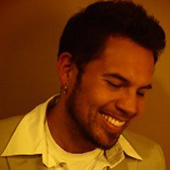This year, my AnswerLab colleagues and I attended the 2013 UX Awards with a plan to interview attendees, judges, and winners and get their perspectives on the significance of the UX Awards. In case you’re not familiar with how the UX Awards work, anyone can submit a digital experience for consideration. This year’s submissions came from companies small and large, agencies, nonprofits, individuals, and students. The projects spanned all types of digital user experiences, including Web, desktop, mobile, and tablet applications; kiosks, interactive TV, social media, interactive displays, and digital campaigns.
Who Judged the UX Awards?
Eight UX experts![]() judged the submissions. The judges represented a wide range of UX professionals, including UX community leaders from IxDA, UXPA, and NYCIA; consultants; and folks in influential research, design, and product roles at leading companies such as Netflix, Google, and Mashable.
judged the submissions. The judges represented a wide range of UX professionals, including UX community leaders from IxDA, UXPA, and NYCIA; consultants; and folks in influential research, design, and product roles at leading companies such as Netflix, Google, and Mashable.
Salon.com CEO and UX Awards judge, Cindy Jeffers, told us, “The quality of the submissions was really exciting. There were a lot of people pushing the boundaries in various industries.” Judge Lis Hubert, IxDA New York Leader, added, “What I took away, and what I hope others do, is a sense of humility—in the sense of other people doing great things. It made me reflect on my own career and think about what I could work on to do better. To take the time to reflect and say, ‘Wow, I really want to do better,’ is what I hope people take away from this event.” Other judges shared their enthusiasm during the opening remarks that they made before presenting the awards, including Chris Jaffe, Director of Innovation at Netflix; Tomer Sharon, Senior Researcher at Google; and John Payne, Principal at Moment Design.
Who Attended the UX Awards and Why?
Among the hundreds in attendance were those who had submitted projects for consideration; professionals ranging from veterans in UX design and research to development and product management; as well as people who are interested in starting a career in user experience. Plus, there were recruiters and entrepreneurs looking for talent.
Although attendees came from diverse professional backgrounds, they all shared a desire to see excellent UX work, network, and build relationships. On the night of the event, when we asked Ashley Delose about her motivations for attending the UX Awards, she said, “To connect with others in the UX community. And I looked forward to hearing from the esteemed lineup of jurors.”
Attendees’ penchant for developing connections was evident before and after the presentation of the awards. As the crowd ramped up for the event, CTO of Mashable, Robyn Peterson, socialized with those gathered for refreshments in the courtyard of Parsons New School of Design. Following the awards, the networking with the newly crowned winners, attendees, and judges continued at a nearby restaurant.
Among those who we interviewed at the UX Awards, nearly all saw the event as an opportunity to be inspired. The event brought exposure to new UX ideas, teams, processes, verticals, and platforms. “It was great to meet such a cross-section of UX designers—beyond just those focusing on Web-based products. To be exposed to UX design outside of one’s area of specialization and think about UX on a broader level,” said UX Awards judge Anders Ramsay, a UX design consultant and agile UX coach who leads the New York City Information Architecture Meetup![]() and The Agile Experience Design Meetup,
and The Agile Experience Design Meetup,![]() which also takes place in New York City.
which also takes place in New York City.
